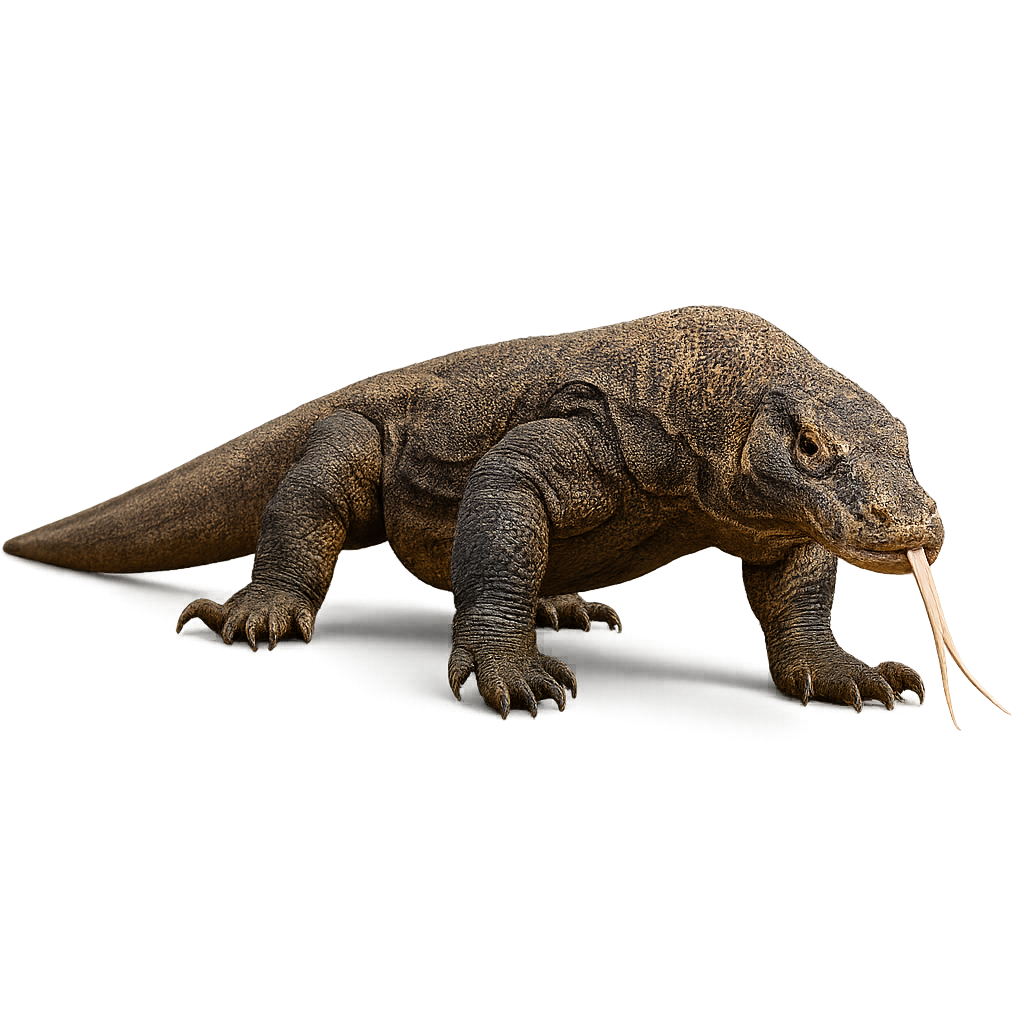Observe and photograph a species in its natural habitat
Learn where and when to observe a species in the wild, how to recognize it in the field, and what habitats it lives in. Get photography tips adapted to its behavior and capture stunning images without disturbing the animal. For full details, open the complete profile in the WildlifePhotographer app.
Komodo dragon
Scientific name: Varanus komodoensis

IUCN Status: Endangered
Family: VARANIDAE
Group: Reptiles
Shyness: Suspicious
Safe distance: 20 m
Breeding season / Courtship: 01.05-31.08
Gestation: 7 à 8 mois
Births: 01.12-31.01
Habitat:
Komodo, Rinca, and Flores islands in Indonesia, including dry forests and savannas
Description:
The Komodo Dragon is a large carnivorous lizard, famous for its impressive size and strength. It typically measures between 2 and 3 meters in length and can weigh up to 70 kg. Its massive body is covered with scales, usually grayish-green, which helps it blend into its natural environment. The Komodo Dragon is found exclusively on a few islands in Indonesia, including Komodo, Rinca, Flores, and Gili Motang. This apex predator feeds on a variety of animals, from birds to mammals like deer, as well as carrion. It primarily hunts using its developed sense of smell, able to detect odors from several kilometers away. Due to its powerful bite and saliva filled with bacteria, the Komodo Dragon can incapacitate its prey and wait for it to succumb to infection before feeding. The species is listed as vulnerable, threatened by habitat loss, illegal hunting, and excessive tourism. Conservation efforts are in place to protect this unique creature and its habitat.
Recommended lens:
>=200 mm
Photography tips:
To photograph the Komodo dragon, a telephoto lens is essential to capture its imposing silhouette, flickering tongue, and rough skin texture without disturbing it. Take photos during the day, when the dragon is active — whether exploring its territory, resting, or interacting with its surroundings. Be patient, stay quiet, and avoid sudden movements. Always respect the safety distance: this powerful predator can be unpredictable, especially if it feels threatened.
Ready to take action?
Choose your platform and start your free trial today



